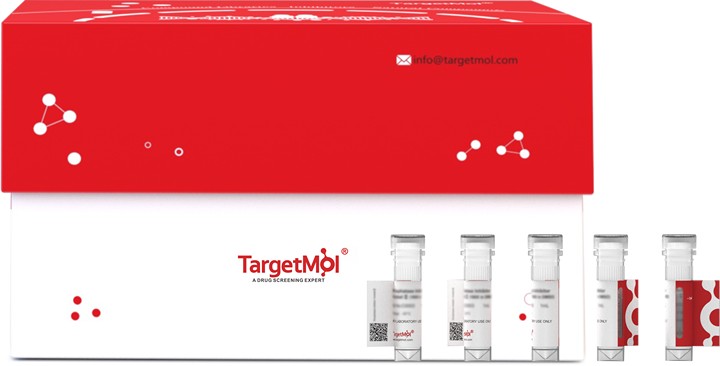购物车
- 全部删除
 您的购物车当前为空
您的购物车当前为空

Agrin Protein, Human, Recombinant (His) is expressed in E. coli expression system with N-10xHis tag. The predicted molecular weight is 27.3 kDa and the accession number is O00468.

| 规格 | 价格 | 库存 | 数量 |
|---|---|---|---|
| 20 μg | ¥ 1,800 | 20日内发货 | |
| 100 μg | ¥ 3,760 | 20日内发货 | |
| 1 mg | ¥ 16,000 | 20日内发货 |
| 生物活性 | Activity has not been tested. It is theoretically active, but we cannot guarantee it. If you require protein activity, we recommend choosing the eukaryotic expression version first. |
| 产品描述 | Agrin Protein, Human, Recombinant (His) is expressed in E. coli expression system with N-10xHis tag. The predicted molecular weight is 27.3 kDa and the accession number is O00468. |
| 种属 | Human |
| 表达系统 | E. coli |
| 标签 | N-10xHis |
| 蛋白编号 | O00468 |
| 别名 | AGRIN |
| 氨基酸序列 | VDTLAFDGRTFVEYLNAVTESELANEIPVPETLDSGALHSEKALQSNHFELSLRTEATQGLVLWSGKATERADYVALAIVDGHLQLSYNLGSQPVVLRSTVPVNTNRWLRVVAHREQREGSLQVGNEAPVTGSSPLGATQLDTDGALWLGGLPELPVGPALPKAYGTGFVGCLRDVVVGRHPLHLLEDAVTKPELRPC |
| 蛋白构建 | 1868-2065 aa |
| 蛋白纯度 | > 85% as determined by SDS-PAGE. |
| 分子量 | 27.3 kDa (predicted) |
| 内毒素 | < 1.0 EU/μg of the protein as determined by the LAL method. |
| 缓冲液 | If the delivery form is liquid, the default storage buffer is Tris/PBS-based buffer, 5%-50% glycerol. If the delivery form is lyophilized powder, the buffer before lyophilization is Tris/PBS-based buffer, 6% Trehalose, pH 8.0. |
| 复溶方法 | Reconstitute the lyophilized protein in sterile deionized water. The product concentration should not be less than 100 μg/mL. Before opening, centrifuge the tube to collect powder at the bottom. After adding the reconstitution buffer, avoid vortexing or pipetting for mixing. |
| 存储 | Lyophilized powders can be stably stored for over 12 months, while liquid products can be stored for 6-12 months at -80°C. For reconstituted protein solutions, the solution can be stored at -20°C to -80°C for at least 3 months. Please avoid multiple freeze-thaw cycles and store products in aliquots. |
| 运输方式 | In general, Lyophilized powders are shipping with blue ice. Solutions are shipping with dry ice. |
| 研究背景 | heparan sulfate basal lamina glycoprotein that plays a central role in the formation and the maintenance of the neuromuscular junction (NMJ) and directs key events in postsynaptic differentiation. Component of the AGRN-LRP4 receptor complex that induces the phosphorylation and activation of MUSK. The activation of MUSK in myotubes induces the formation of NMJ by regulating different processes including the transcription of specific genes and the clustering of AChR in the postsynaptic membrane. Calcium ions are required for maximal AChR clustering. AGRN function in neurons is highly regulated by alternative splicing, glycan binding and proteolytic processing. Modulates calcium ion homeostasis in neurons, specifically by inducing an increase in cytoplasmic calcium ions. Functions differentially in the central nervous system (CNS) by inhibiting the alpha(3)-subtype of Na+/K+-ATPase and evoking depolarization at CNS synapses. This secreted isoform forms a bridge, after release from motor neurons, to basal lamina through binding laminin via the NtA domain.; transmembrane form that is the predominate form in neurons of the brain, induces dendritic filopodia and synapse formation in mature hippocampal neurons in large part due to the attached glycosaminoglycan chains and the action of Rho-family GTPases.; Isoform 1, isoform 4 and isoform 5: neuron-specific (z+) isoforms that contain C-terminal insertions of 8-19 AA are potent activators of AChR clustering. Isoform 5, agrin (z+8), containing the 8-AA insert, forms a receptor complex in myotubules containing the neuronal AGRN, the muscle-specific kinase MUSK and LRP4, a member of the LDL receptor family. The splicing factors, NOVA1 and NOVA2, regulate AGRN splicing and production of the 'z' isoforms.; Isoform 3 and isoform 6: lack any 'z' insert, are muscle-specific and may be involved in endothelial cell differentiation.; is involved in regulation of neurite outgrowth probably due to the presence of the glycosaminoglcan (GAG) side chains of heparan and chondroitin sulfate attached to the Ser/Thr- and Gly/Ser-rich regions. Also involved in modulation of growth factor signaling.; this released fragment is important for agrin signaling and to exert a maximal dendritic filopodia-inducing effect. All 'z' splice variants (z+) of this fragment also show an increase in the number of filopodia. |